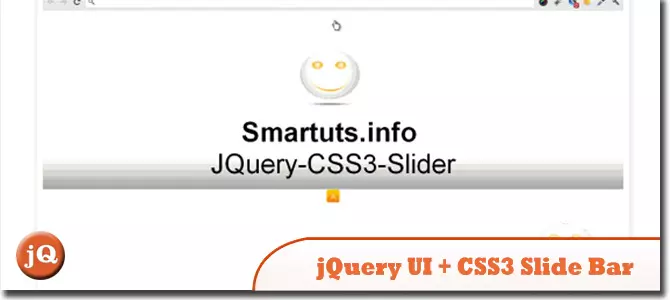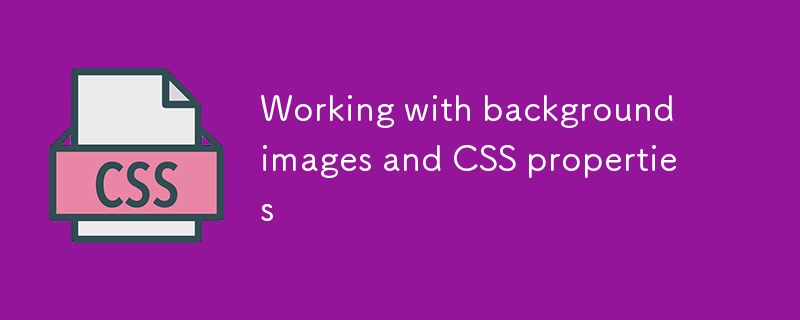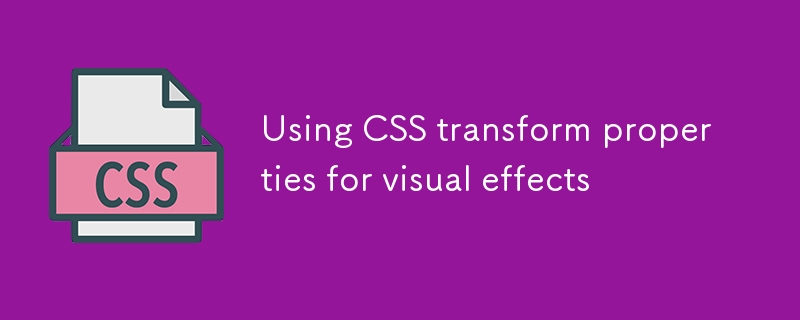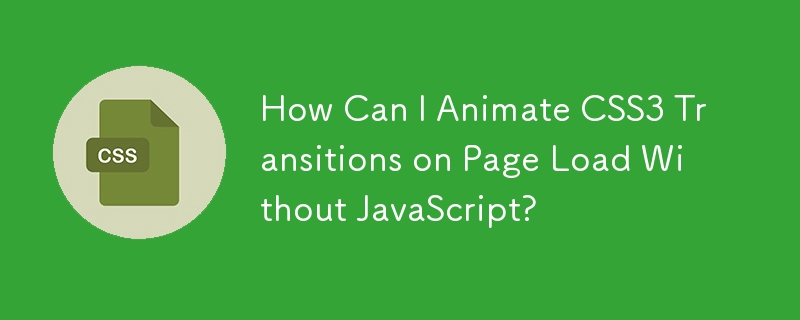Found a total of 10000 related content

H5 page making tips
Article Introduction:How to make a cool and easy-to-use H5 page: Learn about the role of the three musketeers of HTML5, CSS3 and JavaScript. Use CSS3 animations and JavaScript animations to create animation effects. Responsive design allows the page to be displayed perfectly on different devices. Use JavaScript to achieve interactive effects and improve user experience. Optimize images to reduce loading time. Improve page performance through performance optimization. Learn more, practice more, accumulate experience, and create a stunning H5 page.
2025-04-06
comment 0
1135

How to Build Your Own Progressive Image Loader
Article Introduction:Progressive Image Loading: A Smooth, Efficient Approach to Image Display
This article explores progressive image loading, a technique enhancing user experience by prioritizing speed and visual appeal. It utilizes HTML5, CSS3, and JavaScript to deliv
2025-02-17
comment 0
265

10 Nice jQuery UI Things
Article Introduction:This post showcases ten exceptional jQuery UI components offering smooth interactions, stunning animations, and advanced effects. Elevate your user experience to the next level – let's explore!
jQuery UI CSS3 Slide Bar Tutorial: This tutorial gui
2025-02-26
comment 0
749

8 Cool jQuery Animation Effects Tutorials
Article Introduction:jQuery animation effect tutorial: Say goodbye to Flash animation and embrace the era of jQuery animation!
In the past, animation effects on websites usually rely on Flash. But now, with jQuery, you can easily create various animation effects. The following are some jQuery animation effects tutorials to help you start your journey of painting! Related readings:
10 CSS3 and jQuery loading animation solutions
3D JavaScript animation—three.js
JQuery animation feed display imitating Foursquare
This tutorial will show you how to easily create an RSS scrolling subtitle effect using jQuery.
Source Code Demo
jQue
2025-02-26
comment 0
475

Working with background images and CSS properties
Article Introduction:How to set web page background image with CSS and optimize loading? First, select the appropriate background image, select JPG/WebP/PNG format according to the purpose, and pay attention to copyright in a unified style; second, use CSS attributes to set the background image, including background-image specified path, background-repeat control duplication, background-size and background-position adaptation to the screen; third, optimize the loading speed, improve the user experience by compressing images, using WebP format, delaying loading, adding transition effects and setting transition colors.
2025-07-11
comment 0
858

What are the different ways to handle side effects in Vue.js components?
Article Introduction:The article discusses managing side effects in Vue.js, focusing on lifecycle hooks, watchers, computed properties, methods, and the Composition API. It also covers asynchronous operations using promises, loading states, error handling, and tools like
2025-03-31
comment 0
347

What are the successful cases of H5 page production
Article Introduction:The key tips for successful H5 page production cases are carefully arranged to ensure smooth and natural. Cleverly utilize touch screen events to realize user interaction. Adopt lazy loading technology to improve page loading speed. Pay attention to user experience and avoid blindly pursuing cool effects. Focus on performance optimization and code maintainability. Comprehensive testing to ensure proper use on all browsers and devices.
2025-04-06
comment 0
293

When to use scripts in the head and when to use scripts in the body?
Article Introduction:The article discusses the impact of script placement in HTML's head or body on webpage performance and SEO. Key issues include blocking nature of scripts, asynchronous loading, and their effects on load times and user experience.
2025-04-30
comment 0
291

HTML5 Web Audio API Tutorial: Building a Virtual Synth Pad
Article Introduction:This article explores the HTML5 Web Audio API, demonstrating how to build a basic virtual synth pad with various audio effects. We'll cover creating an AudioContext, loading and playing audio files, adding volume control, looping, reverb, and filter
2025-02-21
comment 0
1152

How to add a preloader or loading screen to an HTML website?
Article Introduction:To add loading animation to a web page, first create an animation structure and set the style with HTML and CSS, and then hide the animation after the page loading is completed through JavaScript. The specific steps are as follows: 1. Create an HTML structure for loading animations, such as a div containing a rotating icon; 2. Use CSS to set animation styles, including centered display, background color and animation effects; 3. Listen to the window.onload event through JavaScript, and hide the animation after the page resource is loaded; 4. You can combine the DOMContentLoaded event or imagesLoaded library to achieve more accurate load control; 5. Pay attention to avoiding animations hindering user interaction, adapt to mobile terminals and optimize page loading
2025-07-13
comment 0
157

What exactly does H5 page production mean?
Article Introduction:H5 page production refers to the creation of cross-platform compatible web pages using technologies such as HTML5, CSS3 and JavaScript. Its core lies in the browser's parsing code, rendering structure, style and interactive functions. Common technologies include animation effects, responsive design, and data interaction. To avoid errors, developers should be debugged; performance optimization and best practices include image format optimization, request reduction and code specifications, etc. to improve loading speed and code quality.
2025-04-06
comment 0
1461

How to make h5 next page
Article Introduction:There are two common ways to create the next page in the H5 page: jump directly: use the <a> tag to link to the target page. Ajax Loading: Dynamically load new page content through Ajax requests, providing smooth transition effects.
2025-04-06
comment 0
969

Using CSS transform properties for visual effects
Article Introduction:The CSStransform property implements the translation, rotation and scaling effects of elements through functions such as translate, rotate, scale. 1. Translate is used for smooth movement, such as button hover displacement; 2. Rotate implements rotation animation, suitable for loading icons; 3. Scale produces scaling feedback, such as image hovering; 4. Multiple functions can be used in combination to enhance visual effects without affecting layout and improve interactive experience.
2025-07-10
comment 0
394

10 jQuery and CSS3 Mobile App Styles
Article Introduction:10 amazing jQuery and CSS3 mobile application styles are worth a try!
Today we show you 10 amazing jQuery and CSS3 mobile app styles, they are so cool and definitely worth your experience!
Anonymous pen: Responsive web design detector
Source code and demonstration
Twitter button without iframe
Embedding Tweets or following buttons on responsive websites can be a bit tricky because they can greatly increase page loading time. However, they are a great way to spread a new blog post or article.
Source code and demonstration
Android clock animation
Create animated effects of Android docking clock.
Source code and demonstration
Device switcher
Show responsive
2025-02-23
comment 0
749

10 Funny and Entertaining JavaScript Effects
Article Introduction:Interesting JavaScript effects: Tips to improve user experience
Core points
JavaScript can create various interesting effects, such as allowing images to fly around the mouse pointer, converting web pages into editable modes, and creating fake warning boxes to improve the user experience of the website.
While these effects are fun and engaging, they must be used with caution to avoid cluttered web pages or slower loading.
These effects can be implemented using JavaScript libraries such as jQuery or Three.js, or writing custom JavaScript code. Websites such as GitHub, SitePoint and online learning platforms provide resources to learn to create these special effects.
Ready to have a happy Friday
2025-03-01
comment 0
966

What is the impact of third-party scripts on performance?
Article Introduction:Third-party scripts may slow down website performance, but can reduce impact through optimization strategies. They are provided by external service providers and are often used for advertising, analytics or social functions, but loading and execution are not fully controlled by the website owner. The main effects include increasing loading time, occupancy of the main thread, initiating additional requests and lack of controllability. To reduce the burden, the following measures can be taken: 1. Evaluate the necessity and remove unimportant scripts; 2. Use asynchronous or delayed loading technology; 3. Use placeholders to load core content first; 4. Integrate services to reduce the number of requests; 5. Continuous monitoring of performance indicators and timely adjustments. The rational use of third-party scripts can achieve a balance between functions and performance.
2025-06-27
comment 0
655

Embedding Images Using the HTML img Tag
Article Introduction:When embedding images with HTML tags, you need to pay attention to path settings, alt descriptions and responsive processing. 1. The path settings must be accurate, distinguishing between relative paths, subdirectory paths and absolute URLs; 2. Clear and concise alt alternative text must be filled in to improve accessibility and SEO; 3. It is recommended to use CSS to control width and height to avoid layout jitter, and you can also set width or height to achieve similar scaling; 4. Optional properties such as loading="lazy" delay loading, decoding="async" asynchronous decoding, and srcset multi-resolution adaptation can improve performance and responsive effects.
2025-07-12
comment 0
167

HTML5 canvas image manipulation techniques
Article Introduction:Image loading and drawing: Ensure the image loading is completed through img.onload, and then use the ctx.drawImage() method to draw the image on canvas; 2. Adjust the color and apply filters: Use getImageData() to obtain pixel data and modify the R, G, B, and A values to achieve grayscale, brightness adjustment, color inversion and other effects, and then write back through putImageData(); 3. Image cropping and synthesis: Use the nine-parameter version of drawImage to perform area cropping, and multiple layers synthesis such as watermarking through multiple drawings; 4. Export the processed image: use the toDataURL() or toBlob() method to export the image, and combine the a tag to achieve download.
2025-07-13
comment 0
538

HTML5 Microdata: Improving Semantic Markup
Article Introduction:HTML5Microdata improves the semantics and SEO effects of web pages by adding specific attributes to HTML. 1) Use item scope and itemtype to define objects, and itemprop specifies properties, such as restaurant information. 2) Pay attention to using the correct vocabulary of Schema.org to avoid increasing file size affecting loading speed. 3) Use it on key elements and use tools to verify the correctness of the mark.
2025-06-07
comment 0
940



















